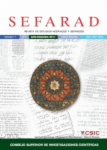
SEFARAD
Scope & Guideline
Cultivating Knowledge in the Heart of Iberia
Introduction
Aims and Scopes
- Sephardic Literary Studies:
The journal covers a wide range of literary works produced by Sephardic authors, including analyses of themes, styles, and the socio-historical contexts of these texts. - Historical Contextualization:
Research often delves into the historical circumstances surrounding Sephardic communities, including their experiences during the Inquisition, migration, and cultural exchanges in various regions. - Linguistic Analysis:
A significant focus is placed on the study of Judeo-Spanish and other dialects, examining their structures, evolution, and the influence of surrounding languages and cultures. - Cultural and Religious Intersectionality:
The journal seeks to understand the interactions between Sephardic Jews and other cultural or religious groups, particularly through studies on conversions, intermarriages, and community dynamics. - Manuscript Studies and Textual Criticism:
SEFARAD publishes critical editions and studies of historical manuscripts, emphasizing their linguistic, religious, and cultural significance. - Gender Studies in Sephardic Contexts:
Recent articles reflect an interest in gender dynamics within Sephardic literature and history, exploring the roles and representations of women.
Trending and Emerging
- Interdisciplinary Approaches to Sephardic Studies:
There is a noticeable trend towards integrating methodologies from various disciplines, such as anthropology, sociology, and cultural studies, to enrich the understanding of Sephardic history and identity. - Exploration of Judeo-Arabic and Other Dialects:
Research focusing on Judeo-Arabic and its variants has gained prominence, highlighting the linguistic diversity within Sephardic communities and their historical significance. - Digital Humanities and Sephardic Studies:
Emerging interest in the application of digital humanities tools for analyzing Sephardic texts and manuscripts is evident, enabling new forms of scholarship and accessibility. - Contemporary Sephardic Identity:
Recent papers increasingly explore themes related to modern Sephardic identity, including diaspora experiences, cultural revival, and the impact of globalization. - Gender and Sexuality Studies:
There is a growing scholarly focus on gender and sexuality within Sephardic literature and historical contexts, reflecting broader trends in humanities research.
Declining or Waning
- Traditional Historical Narratives:
There appears to be a decline in the focus on traditional historical narratives that primarily emphasize major events in Sephardic history, as newer studies increasingly adopt interdisciplinary approaches. - Inquisition Studies:
Although still relevant, the frequency of papers solely dedicated to the Inquisition is decreasing, suggesting a move towards broader thematic explorations rather than isolated historical events. - Studies on Sephardic Influence in Non-Jewish Contexts:
Research examining the influence of Sephardic culture on non-Jewish communities has become less prevalent, potentially overshadowed by more focused studies on internal community dynamics. - Classic Sephardic Folklore:
Interest in traditional folklore and oral histories has lessened, with a growing emphasis on modern interpretations and contemporary cultural expressions. - Linguistic Purism:
There is a noticeable reduction in studies promoting linguistic purism in Judeo-Spanish, as more scholars embrace the hybrid nature of the language and its evolution.
Similar Journals
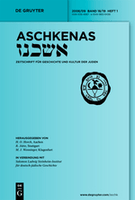
Aschkenas-Zeitschrift fuer Geschichte und Kultur der Juden
Engaging with the Tapestry of Jewish HistoryAschkenas-Zeitschrift fuer Geschichte und Kultur der Juden, published by WALTER DE GRUYTER GMBH, is a distinguished academic journal that delves into the rich history and cultural heritage of Jewish communities. Based in Germany, this journal is indexed under the ISSN 1016-4987 and E-ISSN 1865-9438, making its contributions accessible to an international audience. Although it currently operates without open access options, the journal serves as an important platform for researchers in the fields of Arts and Humanities, History, Literature and Literary Theory, and Religious Studies, as evidenced by its publication history from 1996 to 2023. While ranked in the fourth quartile across various categories on Scopus, the journal provides critical insights and interdisciplinary approaches that enrich the understanding of Jewish cultural narratives. Researchers, professionals, and students alike will find valuable content that not only highlights historical perspectives but also engages with contemporary cultural discussions. This journal remains a vital resource for those seeking to deepen their knowledge and contribute to ongoing dialogues in Jewish studies.

Studia Ceranea
Unlocking Knowledge in Cultural and Religious StudiesStudia Ceranea is an esteemed academic journal published by WYDAWNICTWO UNIWERSYTETU LODZKIEGO, dedicated to advancing research in the fields of Cultural Studies, History, and Religious Studies. With an ISSN of 2084-140X and an E-ISSN matching, this journal has been a pivotal platform for scholarly dialogue since its establishment, now enjoying an Open Access format since 2016, which fosters greater accessibility of its articles. Based in Poland, Studia Ceranea has witnessed significant convergence, with publication efforts spanning from 2011 to 2024. The journal's current standing is reflected in its quartile rankings, placing it in the Q4 category for 2023 across Cultural Studies, History, and Religious Studies. Additionally, it sits at rank #1124 in History and #414 in Religious Studies within Scopus ranks, evidencing its role in the wider academic landscape. Researchers, professionals, and students alike are encouraged to engage with this journal as it continues to explore and illuminate critical themes within the humanities and social sciences.
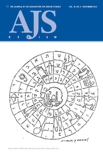
AJS Review-The Journal of the Association for Jewish Studies
Elevating Research and Insights in Jewish StudiesAJS Review - The Journal of the Association for Jewish Studies is a leading academic journal published by the University of Pennsylvania Press, dedicated to advancing scholarship in Jewish studies. With its ISSN 0364-0094 and E-ISSN 1475-4541, the journal offers a rich compendium of research from various disciplines, including cultural studies, history, literature and literary theory, and religious studies. Recognized within the Q2 and Q3 quartiles across multiple categories in 2023, AJS Review provides an esteemed platform for academics to disseminate innovative ideas and engage with critical issues relevant to Jewish history and culture from 1976 to 2024. Although not an open-access journal, it ensures that high-quality, peer-reviewed articles are available to a global audience, enabling researchers, professionals, and students to foster deeper insights into Jewish narratives and heritage. By promoting interdisciplinary dialogue, AJS Review is integral to the academic community, offering valuable contributions to our understanding of Jewish studies and its broader implications.

ZEITSCHRIFT FUR RELIGIONS-UND GEISTESGESCHICHTE
Advancing Scholarly Dialogue on Belief and PhilosophyZEITSCHRIFT FUR RELIGIONS-UND GEISTESGESCHICHTE is a prominent academic journal published by BRILL, focusing on the intricacies of religious and intellectual history. Since its inception in 1929, this journal has provided a key platform for scholarly discourse, offering insights into the historical evolution of religious beliefs and philosophical thought. Although it currently holds a Q4 ranking in the fields of History, Philosophy, and Religious Studies according to the 2023 category quartiles, it serves as an important resource for researchers and students alike who are engaged in these disciplines. With an ISSN of 0044-3441, the journal strives to foster academic dialogue and critical analysis, contributing to the understanding of how religious and philosophical ideologies shape human experience. The journal is based in Leiden, Netherlands, and while it does not currently offer open access, it supports the academic community by providing essential research articles that are invaluable for those exploring the intersections of faith, culture, and thought.
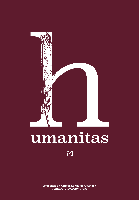
Humanitas-Portugal
Exploring the Depths of Human CultureHumanitas-Portugal is a distinguished open access journal published by IMPRENSA UNIV COIMBRA that has been fostering scholarly dialogue since its inception in 1947. With an ISSN of 0871-1569 and E-ISSN 2183-1718, the journal serves as a platform for rigorous academic work in the fields of Archeology, Classics, History, Philosophy, and Religious Studies. Although positioned in the Q4 quartile by Scopus rankings, its commitment to accessibility and knowledge dissemination in Portugal highlights its significance to the academic community. Researchers and students can access articles openly, encouraging a broader engagement with various disciplines. With its convergence of studies from 2018 to 2024, Humanitas-Portugal continues to contribute to the understanding of human culture and thought, making it an essential resource for anyone invested in the humanities.

Quest-Issues in Contemporary Jewish History
Connecting Scholars to the Heart of Jewish HistoryQuest - Issues in Contemporary Jewish History is a pivotal open-access journal published by the Fondazione Centro Documentazione Ebraica Contemporanea in Italy. Since its inception in 2010, this journal has been dedicated to the scholarly exploration of the multifaceted dimensions of contemporary Jewish history, making significant contributions to the fields of history and cultural studies. With an ISSN of 2037-741X, it serves as a vital platform for researchers, professionals, and students alike, providing access to an array of insightful articles and research findings. As of 2023, it holds a respectable Q3 ranking in the History category within Scopus, indicating its growing influence in academia, alongside a rank of #899 out of 1760 in Arts and Humanities – History. This makes it an essential resource for those looking to deepen their understanding of Jewish history in a contemporary context. The journal, with its rich scholarly outputs converging from 2017 to 2023, is based in Milan and strives to foster high-quality research in Jewish studies.
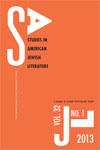
Studies in American Jewish Literature
Celebrating the Legacy of Jewish Literary ContributionsStudies in American Jewish Literature, published by Penn State University Press, is a premier academic journal that delves into the rich tapestry of Jewish literary expression in America. With an ISSN of 0271-9274 and an E-ISSN of 1948-5077, this journal serves a vital role in the fields of Literature and Literary Theory, Cultural Studies, and Anthropology, as evidenced by its placement in the Q1 to Q3 quartiles across various categories in 2023. The journal is a key platform for researchers, professionals, and students interested in exploring the intersection of Jewish identity and American literature, contributing to a deeper understanding of cultural narratives and societal impacts. The publisher's commitment to scholarly excellence ensures that each issue is meticulously curated, showcasing innovative research and critical analysis. While not open access, the journal provides essential insights for anyone engaged in the study of Jewish literature or the broader cultural dynamics at play in American society. Stay informed on contemporary themes and historical contexts that shape literary discourse through this commendable publication.

NOVYI MIR
Cultivating Insight into Contemporary Cultural IssuesNOVYI MIR, published by IZD STVO IZVESTIYA, is a distinguished journal that provides a platform for scholarly discourse in the humanities, literature, and cultural studies. With an ISSN of 0130-7673, this journal has made significant contributions to the academic community, particularly within Russia and Eastern Europe. Although it does not currently offer an open access model, its content is revered for its quality and depth, catering to researchers, professionals, and students alike. With a commitment to examining contemporary issues through a literary lens, NOVYI MIR is essential for those seeking to explore the intersection of culture and society. The journal's relevance is underscored by its esteemed reputation in literary circles, making it a vital resource for anyone dedicated to understanding the nuances of Russian literature and thought.

STUDI FRANCESI
Nurturing Emerging Voices in Literary TheorySTUDI FRANCESI, published by Rosenberg & Sellier, is an esteemed journal in the fields of Cultural Studies, History, and Literature and Literary Theory. With an ISSN of 0039-2944, this journal has been a significant contributor to scholarly discourse since its inception in 1967. Operating from Turin, Italy, STUDI FRANCESI aims to explore and critical analyze the interplay between culture, literature, and historical context, reflecting diverse methodologies and perspectives that shape our understanding of the humanities. Despite being classified in Q4 quartiles according to the latest metrics, it offers a unique platform for emerging voices and innovative research, thus serving both seasoned academics and new researchers keen to delve into the nuances of Italian and European cultural heritage. Journals of this caliber are crucial for fostering academic dialogue and expanding the frontiers of knowledge, making it an invaluable resource for students, professionals, and scholars alike.

Nordisk Judaistik-Scandinavian Jewish Studies
Cultivating Knowledge on Jewish Practices across the Nordic LandsNordisk Judaistik-Scandinavian Jewish Studies is a distinguished academic journal dedicated to the exploration of Jewish culture, history, and religious practices in the Scandinavian context. Published by the DONNER INSTITUTE FOR RESEARCH ON RELIGIOUS AND CULTURAL HISTORY in Finland, this journal has been an open access platform since 2016, allowing easy dissemination of knowledge and fostering scholarly communication among researchers, educators, and students. With a variety of subjects encompassing Anthropology, Cultural Studies, History, and Religious Studies, the journal has achieved commendable recognition, with its latest rankings placing it in Q2 in several categories according to the 2023 Scopus rankings. The journal's significant contribution to the field is evident through its impact, evidenced by its strategic position within its respective quartiles. By bridging interdisciplinary methodologies and Jewish studies within a Scandinavian framework, Nordisk Judaistik serves as an essential resource for those engaged in the complexities and nuances of Jewish heritage and identity in the region.